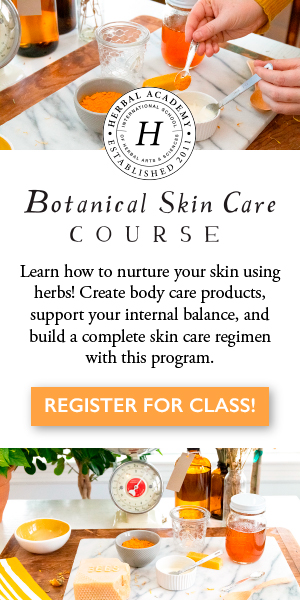I was honored to work with the Association of Placenta Preparation Arts to write a piece about the safety concerns surrounding using essential oils in the encapsulation process.
Here is a link to the original article, if you are considering placenta encapsulation, please contact a professional with the APPA®.

By, Leslie Moldenauer, CHNC, HHP, Certified Aromatherapist
The placenta is a beautiful and integral organ of life. It is the vital force for your baby, taking the role of sole support at the end of the first trimester of pregnancy until birth. The placenta has a number of important roles, and now it is being shown to have amazing benefits for mom after giving birth as well.
Birthing the placenta is considered the third stage of delivery, and many moms are now choosing to encapsulate their placenta to consume it mere hours after giving birth. What is placenta encapsulation? How is it done and is it safe? Are their benefits to the new mother?
What are the benefits?
Consuming the placenta after birth has shown to be really beneficial for the health of mom in numerous ways.
It is stated that consuming the placenta after birth is incredibly helpful at lowering the risk of postpartum depression, at providing sustained energy and aiding in the uterus returning to its post-pregnancy state [1].
“We surveyed 189 females who had ingested their placenta and found the majority of these women reported perceived positive benefits and indicated they would engage in placentophagy again after subsequent births. When asked to describe any positive effects experienced, the majority of women in the sample claimed that they experienced improved mood as a result of consuming their placenta postpartum (40%). The second most frequently given response to this question was increased energy/decreased fatigue (26%). Women also reported benefits related to improved lactation (15%) and alleviated postpartum bleeding/discharge (7%)”[2].
The rates of women who are affected by postpartum depression (PPD) are staggering, and constantly on the rise. According to a study performed in 2017 by the CDC, approximately one in nine women currently experience symptoms of PPD [3]. These numbers are very significant. It is encouraging that consuming the placenta can be beneficial.
*If you think you may be suffering from PPD, please see your doctor.
Consuming the placenta after birth is also noted to assist lactating mothers with milk production.
“Powdered Placenta Hominis was used for 57 cases of insufficient lactation. Within 4 days, 48 women had markedly increased milk production, with the remainder following suit over the next three days” [4].
We can see that there are possible benefits to consuming the placenta after birth. Preparation is very specific, by professionals that are highly trained. These include meeting OSHA laws and regulations [5] and being trained in bloodborne pathogen safety. It is equally important to have quality liability insurance.
Many individuals that have chosen to do this work do it as a part of an adjunct to their main niche. Many have added placenta encapsulation to their existing services as a doula or midwife.
The method of placenta encapsulation
If you are considering placenta encapsulation, make sure you find someone that adheres to very high standards, such as encapsulators who have been through a training program like APPA (Association of Placenta Preparation Arts). All surfaces and equipment used should be sanitized meticulously with a bleach solution and rinsed thoroughly. Because of the risk of bloodborne pathogen transmission, strict sanitation guidelines should be followed. Certifying organizations like APPA have encapsulators following OSHA regulations and their own additional safety protocol for the benefit of clients and professionals alike.
There are currently two methods of encapsulation. The first is the Raw Start method.
*The following information regarding methods is paraphrased from the website findplacentaencapsulation.com [6]
Raw Start method
The preparer slices up the placenta and places it into a high-quality food dehydrator until it is fully dried. It is then powdered and placed into capsules.
This gives a higher yield than the second method. Because the placenta is not steamed prior to dehydration there may be a slightly increased risk of harmful bacteria.
TCM (Traditional Chinese Medicine) method
In this method, the placenta is steamed for approximately 30-45 minutes before being sliced and placed into the dehydrator. TCM has a long-standing belief of balance in all things. In the TCM model, good health and balance is believed to be due to a balance of yin, which is considered negative, dark and feminine, and yang, which is positive, bright, and masculine [7]. This method of encapsulation is then thought to balance the yin and yang of the placenta. An encapsulator utilizing this method should have some level of training in TCM, or at least training in the history and methodology behind it. The traditional method steams the placenta using primarily lemon, ginger, and hot pepper in the water. Some practitioners may opt for additional herbs or none at all. None of these are actually encapsulated with the placenta for consumption. In addition to balancing yin and yang properties/energies, steaming the placenta also kills off a myriad of microbes.
You will yield less volume of powder in the end, as steaming the placenta shrinks it considerably. Another possible con is that utilizing foods and herbs could potentially increase the likelihood of an allergic reaction in food sensitive women. A thorough consultation with the mother is therefore recommended.
So, in light of this, what could some possible issues be in adding essential oils to the steaming water in the TCM method?
What we need to know about essential oils
Essential oils are derived from the various parts of the plant, most often by steam distillation. Therefore, they are highly concentrated extracts that are approximately 75-100 times more concentrated than dried herbs [8]. Very little essential oils should be used compared to fresh or dried herbs in any application.
Aromatherapy educator Andrea Butje of Aromahead Institute states that “it takes anywhere from 30-50 blossoms to produce one single drop of Rose Otto Essential Oil” [9]. According to the Essential Oil Company, rose is a very low yield of approximately 0.006% [10].
In comparison, Peppermint essential oil has a yield of anywhere from 1.0-2.5% [11], still very low. Why am I making a point to reference these percentages? To illustrate just how concentrated essential oils are. Because of this concentration, we must use extreme caution when we use them. Many essential oils should not be used immediately before or after surgery, when taking medications, if there is a blood clotting issue present, when an individual has a weakened constitution and a whole host of other considerations. Aromatherapists have to analyze all of this before we recommend utilizing essential oils in any manner, especially after giving birth.
What are other risks of using essential oils in placenta preparation?
Essential oil enthusiasts and practitioners alike know that there is a great benefit to what is called a steam tent, or steam bowl with essential oils. This is generally utilized for times where respiratory support is needed. It is performed by heating up a pot of water, below a boil, then pour the water either into a sink or bowl, adding a couple drops of essential oil and covering your head with a towel and inhaling the therapeutic steam.
Essential oils are helpful in this manner via direct inhalation, but can we assume that the placenta would benefit as well?
Adverse effect/allergy
As I mentioned above, it is known that specific essential oils, or oil constituents, come with cautions and contraindications when specific medical conditions are present or medications are being taken [12]. When essential oil molecules are present in the air of the steam, the placenta will absorb these constituents, possibly causing an issue when taken internally, much like that mother above with food sensitivities. It is simply not worth the inherent liability.
Adulterated essential oils
Not all essential oils are created equal. There are numerous chemists that test essential oils for purity due to the rising number of essential oils companies, and subsequently, we are finding many on the market to be less than stellar in their contents and composition. There are inferior products that have been adulterated or extended with a vegetable-based carrier oil, alcohol, an emulsifier, or even cheaper oil with a similar chemistry. Adulterated essential oils would definitely be detrimental to the encapsulation process.
Another consideration to use
Some new moms opt to receive the steaming water to be taken internally as a broth for additional nourishment. This is another very important reason to keep essential oils out of the water, as we know that oil and water do not mix. Please do not consume essential oils internally without a thorough consultation from a qualified aromatherapist trained in this area.
APPA (Association of Placenta Preparation Arts) standards
APPA® provides the broadest and most comprehensive training in placenta preparation in the world, considered the “Bachelor’s Degree in Placenta Arts” [13]. The training has been prepared by the industry’s pioneers with many years of experience, which have collaborated their collective wisdom to teach and empower others. APPA® does not condone the use of essential oils in the art of placenta preparation.
Closing
Risk versus benefit must always be considered in any intervention that we embrace for the betterment of our health. There are many risks and no known benefits to the practice of using essential oils in the preparation of your placenta.
Please do your research when seeking out a qualified practitioner to guide you if you are considering this time-honored tradition.
References
[1] Selander, J., Cantor, A., Young, S. M., & Benyshek, D. C. (2013). Human Maternal Placentophagy: A Survey of Self-Reported Motivations and Experiences Associated with Placenta Consumption. Ecology of food and nutrition, 52(2), 93-115.
[2] Homes, Peter. (1997). Jade Remedies. Snow Lotus Press, 352.
[3] Trends in postpartum depressive symptoms-27 states, 2004, 2008, and 2012, Retrieved from https://www.cdc.gov/mmwr/volumes/66/wr/mm6606a1.htm?s_cid=mm6606a1_w
[4] Bensky/Gamble. 1997. Materia Medica, Eastland Press, 549.
[5] OSHA Laws and Regulations. Retrieved from https://www.osha.gov/law-regs.html
[6] Methods of Encapsulation. Retrieved from http://findplacentaencapsulation.com/placenta-encapsulation-methods/
[7] Yin and Yang Theory. Retrieved from https://www.tcmworld.org/what-is-tcm/yin-yang-theory/
[8] How Concentrated are Essential Oils. Retrieved from http://www.labofflowers.com/answersbook6.html
[9] Andrea Butje. (2017) The Heart of Aromatherapy. Carlsbad, CA: Hay House, Inc., p. 6]
[10] [11] Percent yield guide for essential oil distillation. Retrieved from https://www.essentialoil.com/pages/percentage-yield
[12] Tisserand, R., Young, R., & Williamson, E. M. (2014). Essential oil safety: A guide for healthcare professionals. Edinburgh: Churchill Livingstone/Elsevier.
[13] Association of Placenta Preparation Arts. Retrieved from https://placentaassociation.com/





